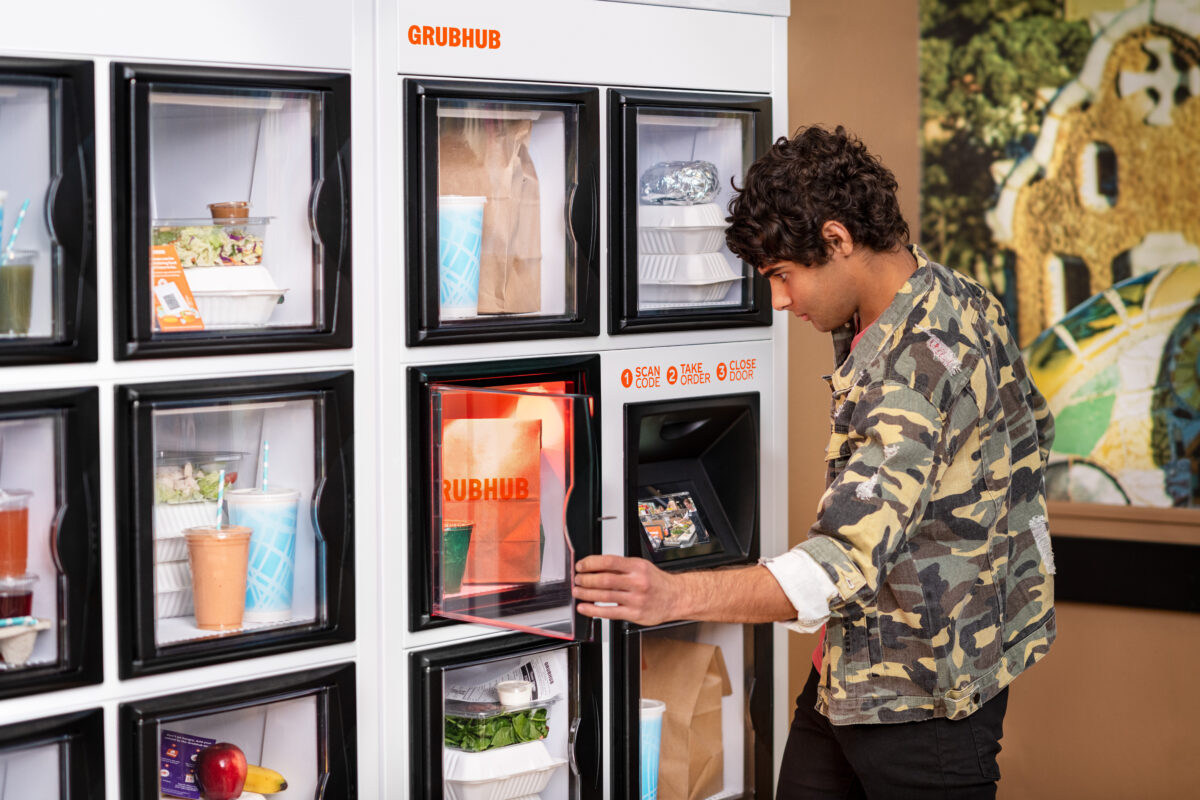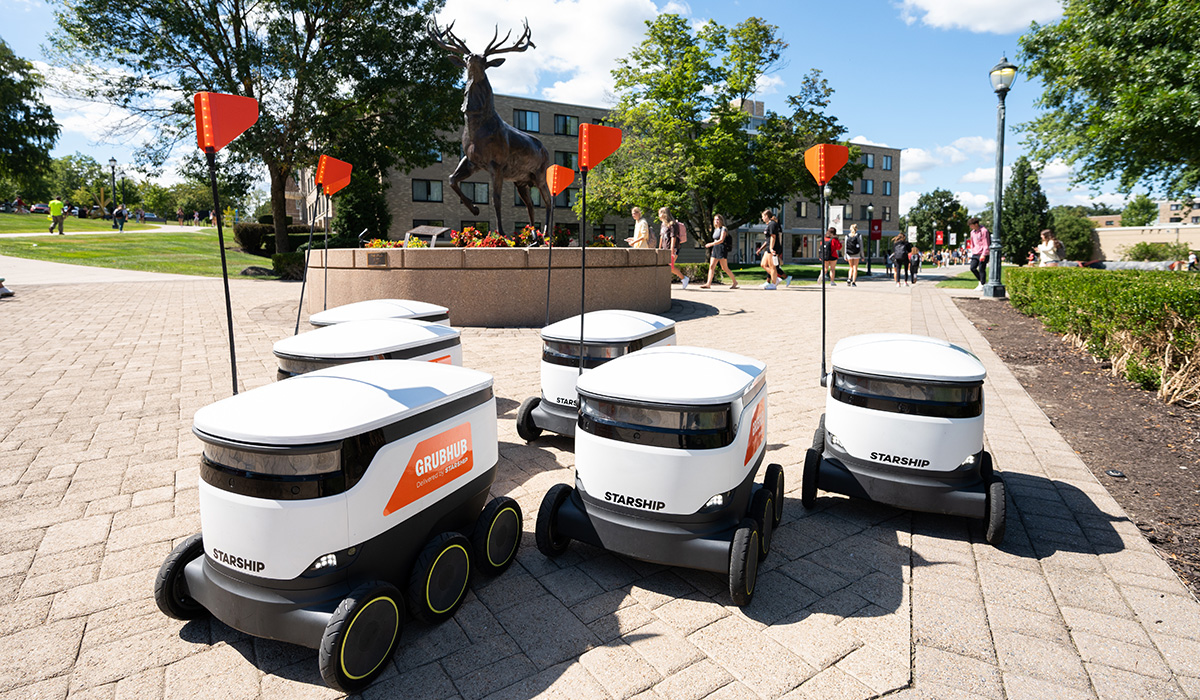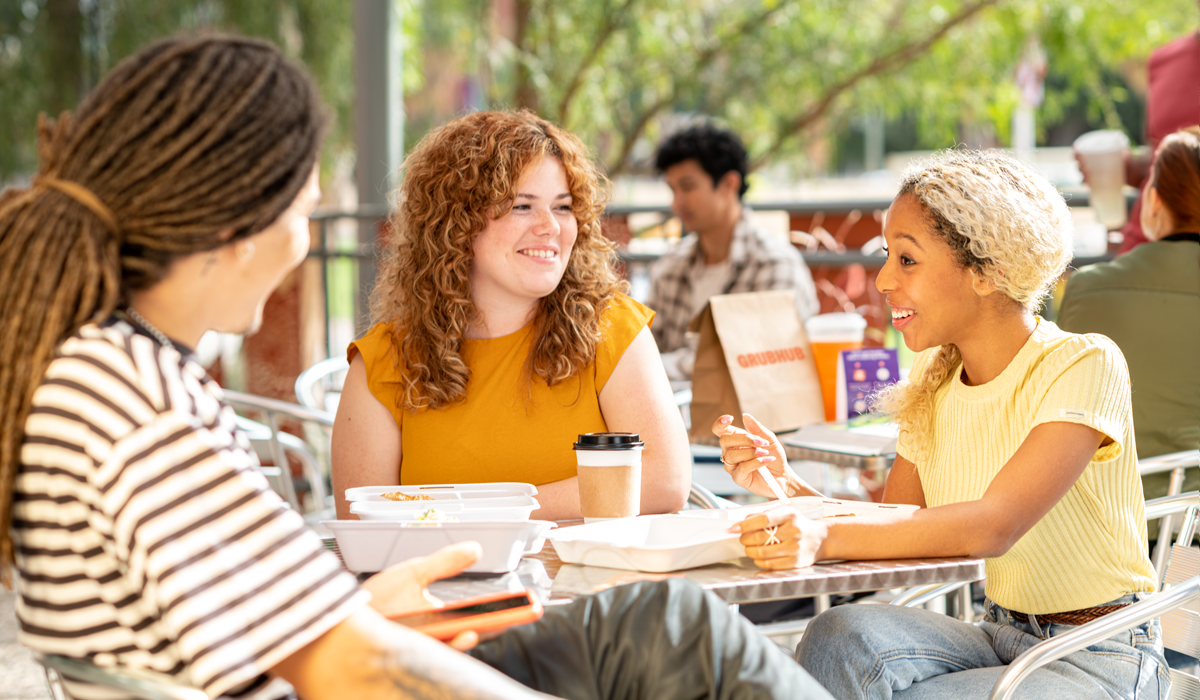Across the United States, students are increasingly interested in low-contact dining options. It’s important for businesses to adapt accordingly, but labor challenges can make it difficult to keep up with the demand. If you’re facing a similar situation on your college campus, food lockers might be the right solution — these smart, app-activated storage units provide an efficient, affordable way to handle takeout orders and are a potential solution to handle a higher order volume without additional labor costs.
What Are Food Lockers?
Food lockers are secure compartments that hold takeout orders until customers pick them up. It’s a convenient addition to the traditional carryout or delivery model — customers can order food through an app or website and select a locker location. When the order is ready, a restaurant worker places it into a locker and marks the order as ready for pickup. The customer receives a notification and a unique QR code; when they scan the code at the kiosk, the correct locker opens.
Grubhub On Site, which offers mobile ordering for college campuses makes it easy to integrate food lockers into your campus dining operations. Through our smart lockers partnership with Apex, each locker unit integrates directly into the Grubhub system for seamless app ordering and restaurant-side fulfillment.
Common Types of Food Lockers
If you’re considering adding smart lockers to your dining system, it’s important to understand the available options. Common types include:
- Flow-through. This type of food locker is built into your restaurant. The back of the unit opens into your kitchen or prep area, so staff members can load orders as soon as they’re ready. The flow-through design speeds up food service and improves the customer experience.
- Front-loading. These food lockers are freestanding units that can be placed in any location, which is convenient if your student dining venues don’t have space for a flow-through unit. Staff members or delivery workers must transport orders from the kitchen and load them into the appropriate locker.
Food lockers have flexible design options and can be used to hold nearly any type of packaged meal, from pizza to fast food. They’re also an easy way to serve food from ghost kitchens that don’t have a storefront for pickup and delivery.
Food Locker Best Practices
As with any new development in the food industry, food lockers require a strategic approach. As you decide on a location and create policies and procedures, use these best practices to guide the process:
- Reduce storage time. Unless you have a temperature-controlled system, it’s usually best to limit the amount of time an order can sit in a locker before pickup. Food safety guidelines should always be followed. Lower storage times also enable a faster order turnover.
- Label lockers clearly. Ensure students can see the numbers on food lockers clearly for easy identification. Your kiosk system should also indicate the locker number once the customer scans the code on the Grubhub app. This process reduces confusion and creates a positive experience.
- Allow room for foot traffic. Position your food lockers so customers have space to retrieve food and leave. The same goes for the back end; restaurant staff members should be able to load lockers without getting in the way of kitchen traffic.
- Choose locations carefully. Place lockers in locations that see a great deal of traffic on campus; because students are already accustomed to pickup orders, they’re more likely to take advantage of new, convenient options including in buildings with no food service such as the lobby of a dorm.
- Communicate with customers. Encourage students and staff to take advantage of your food lockers by promoting them regularly. Educate them about the process so they feel comfortable and confident using the service instead of traditional carryout or delivery.
- Allow for Accessibility. It is important that every customer is able to access their order from a food locker regardless of any physical limitations. Grubhub’s system integration with Apex allows for users to request their orders be placed in the lower compartments if they are not able to reach the higher areas of the locker.
Benefits of Food Lockers
When implemented efficiently, food lockers can give your campus dining program a significant advantage. The biggest benefit is convenience — students can order ahead using the Grubhub app and take the food from a locker when they arrive. There’s no need to stand in line for the cashier or wait for pickup. This fast, efficient customer experience is attractive for college students grabbing lunch between classes or a quick dinner before a night of studying.
Lockers can go a long way toward eliminating long lines at any counter-serve restaurants on your campus. Students can simply pop in and out, reducing crowding and creating a better experience for everyone. You can serve more people in the same amount of time, all while saving money on front-of-house labor. Dynamic ETAs and order-ready notifications create shorter wait times to help keep food fresh, ensuring your food tastes its best.
Smart lockers also reduce the number of people who handle the food. The low-contact process benefits health-conscious students and reduces the risk of human error by lobby attendants. Because meals are secured in a locker, customers can feel confident that their food is safe.
The contactless pickup process was a key driving factor for the University of Arizona, which worked with Grubhub and Apex to install campus food lockers in 2020. Since then, the university has reported easier staffing, less crowding, and higher throughput.
If your college campus could benefit from mobile ordering and smart food lockers, Grubhub On Site can help you create a seamless, fully integrated system. To learn more, contact us today.




